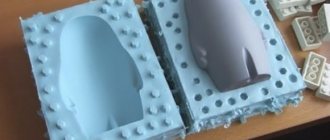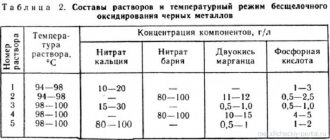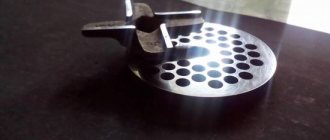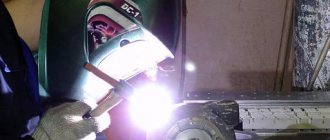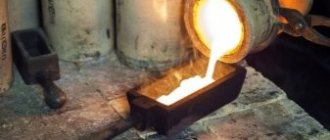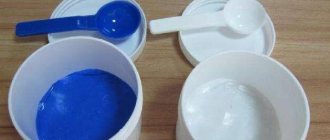Many people associate a thresher with an element of a combine harvester. However, do not forget about individual units that are designed for threshing agricultural crops.
At first glance, such equipment is not needed on the farm, because there are specialized machines that perform harvesting and threshing of grain crops. If you look at the situation from the other side, it becomes obvious that combines are only suitable for large areas.
What should farmers or owners of household plots with relatively small crop areas do? Here, using a combine harvester is impossible: large equipment will not be able to turn around in a small area.
In addition, the cost of servicing the equipment will not be justified by the harvest. In this case, compact threshers come to the rescue, which we will introduce you to.
Thresher device
Threshing, for which machines are used, means separating the grains from the ears, grinding the ears and extracting the grain from the resulting mass. The effectiveness of threshers is determined by the harvested crop, the ears of corn left in the field, and the under-threshing or incomplete extraction of grain. High-performance devices process and preserve up to 99% of raw materials.
For the productive operation of the device, the moisture content of wheat, rye or corn is important. Optimal humidity is from 15 to 20%. Main components of the device:
Compact threshers are used to thresh grain crops on private farms. They are more convenient and practical than large combines when it comes to processing a small volume of grain. You can not only buy a thresher, but also make it yourself from scrap materials.
general description
You can make your own corn husker using a drawing. Peelers are divided into 2 types:
- Big. Used on large farms. The huller is designed for different sizes of corn. It is filled in buckets (from 8 kg) or bags. Cleaning time is 3-5 minutes. In 1 hour of operation, the device processes 500 kg of crop.
- Small. Designed for use at home for peeling one cob. It is inserted into the hole of the device and held with your hand throughout the peeling process. The motor of a small peeler burns out when there is a large volume of work.
The electromechanical unit has 2 holes: the first hole is where corn is filled or inserted, the second hole is where cleaned grain comes out. Bare cobs are unloaded from a large drum. They are taken out by hand. Some types of devices simplify the work: they push empty cobs away from the grain.
A corn husker is a simple tool to make; however, you need to select the dimensions of the parts that correspond to the amount of harvest.
Thresher device
Threshing, for which machines are used, means separating the grains from the ears, grinding the ears and extracting the grain from the resulting mass. The effectiveness of threshers is determined by the harvested crop, the ears of corn left in the field, and the under-threshing or incomplete extraction of grain. High-performance devices process and preserve up to 99% of raw materials.
For the productive operation of the device, the moisture content of wheat, rye or corn is important. Optimal humidity is from 15 to 20%. Main components of the device:
- Bunker for receiving raw materials,
- Working chamber with drum and deck,
- Transporter of incoming raw materials,
- A device for separating grains from the resulting straw and removing them from the working chamber.
The raw materials enter the bunker and are divided into three parts: chaff, straw and grain. In the straw walker, the straw is separated, and the chaff and grain are further processed. Whole grain is cleaned of film and dirt, and blown out of the drum using air flows from a fan.
Simpler models may not have a built-in fan, and the grain must be sown manually from the resulting mass.
Design Features
All modifications of threshing machines work on the same principle: agricultural crops are fed into the threshing hopper, and the output is a purified product.
From here we can highlight the main design elements: a drum with a concave, a straw walker and a beater device.
Some modifications consist of a multi-stage cleaning system, which includes a fan, elevator and sieve mill. Let's look at units designed for processing various crops.
Homemade threshing machines
You can make a thresher with your own hands in two ways. One of them involves attaching the device to a frame, the second allows you to make a device with a fan.
Thresher on frame
Work begins with the manufacture of a metal frame. It is usually made from a strong corner. Average frame dimensions:
The drum is made from a piece of metal pipe with a diameter of 18 cm and a length of about 65 cm. It is attached closer to the middle of the frame, and six rows of twenty steel teeth are mounted along the drum. The distance between the teeth is about three centimeters. Recommended sizes:
The drum shaft is supported by double bearings. And several metal rods are welded over it. It is very important that the length of the teeth is two centimeters longer than the rods. This will ensure better grip of the processed mass.
The frame of the bunker for receiving raw materials is made of wood, and the ribs are reinforced with a metal corner. A frame is placed above the drum, and under it there is a tin tray to release the already crushed raw materials.
The operation of the device is ensured by an engine with a power of about 1500 rpm.
You can increase the shaft rotation speed to three thousand revolutions by installing a pulley on the motor that is twice as large as the one installed on the shaft.
Homemade thresher with fan
Manufacturing begins with assembling the body from a sheet of steel. The front wall of the housing and the hopper for receiving raw materials are made removable. A threshing drum is placed in the front part of the working chamber. It can also be made from a piece of pipe with a diameter of about 18 cm. It is necessary to make a valve in the receiving hopper, which will enter the neck of the working chamber at its lower end. This will prevent unwanted release of raw materials during loading.
The shaft passes through the entire structure of the device and is an important connecting link. It is made of durable steel, and a through slot is cut out on the longitudinal axis using a milling cutter. Elastic wooden whips are installed in it, positioning them with a slight offset for better movement of the mass. A fan is welded on the other side of the shaft.
During operation, wooden whips hit the processed raw materials, grain and chaff fall into air currents and are carried out. The thresher is equipped with a replaceable deck in the form of a lattice. The shape can be either oblong or square. If you plan to thresh durum varieties of rye and wheat, then it is better to use a steel grid with a cell of 7 * 16 mm. For softer grains, you can use a nylon grid with a cell of 6*10 or 10*16 mm.
A special slot is made under the deck, the function of which is to separate plant fibers from the grain. This design also increases the speed of air flow.
A replaceable box made of metal or wood is mounted at the bottom of the apparatus, and a vertical sheet of plywood or tin is welded above it. To regulate the air flow, a small damper is installed at the slot. The device operates from a conventional engine, which produces about 1800 revolutions per minute of operation.
Microthresher-winnower
The design (see illustration) is somewhat similar in appearance to those that were supplied to breeders for weapons in the old days. But the development proposed for self-production has smaller dimensions and greater reliability. In addition, it is possible to avoid scarce components and parts (for example, self-aligning ball bearings, imported “scourge” drum, etc.). By changing some parameters accordingly, instead of the ultra-small one, it is possible to assemble a design that will be quite acceptable for large-scale threshing of grains, legumes, and cereal crops, with simultaneous division of the mass into grain and grain fractions.
The design (see illustration) is somewhat similar in appearance to those that were supplied to breeders for weapons in the old days. But the development proposed for self-production has smaller dimensions and greater reliability. In addition, it is possible to avoid scarce components and parts (for example, self-aligning ball bearings, imported “scourge” drum, etc.). By changing some parameters accordingly, instead of the ultra-small one, it is possible to assemble a design that will be quite acceptable for large-scale threshing of grains, legumes, and cereal crops, with simultaneous division of the mass into grain and grain fractions. The body of the microthresher-winnower is welded, made according to a development (see figure) from sheet steel. Or cast - made of aluminum alloy. Well, its configuration is such that it allows you to almost completely eliminate varietal clogging of grain. With minimal dimensions, this leads to a reduction in manufacturing costs and a significant reduction in the weight of the entire thresher. The body is attached to the supporting wooden platform-base on the front and rear metal racks. In its front part there is a threshing drum. The shaped front wall and the loading hopper are removable. This greatly simplifies the process of installing the central (main) shaft assembly, and significantly reduces the labor costs associated with the need to replace the deck (for each type of crop being processed - grains, legumes, etc. - its own deck).
A special valve is installed in the loading hopper. Rigidly connected to a spring-loaded handle, its lower edge fits into the narrow neck of the loading hopper - to prevent the ejection of grain when feeding ears. Some experienced DIYers even recommend slightly increasing the “pressure force” at the valve. For example, by installing a spiral spring on the cottered end of the loading valve lever axis (this option is not shown in the illustrations given in the material). Now - about the shaft passing through the structure and connecting everything, as they say, into an inseparable whole. It would be better, I think, to machine such a critical part from Steel 45. But the shaft can also be made composite: from a piece of pipe into which “ends”—workplaces for bearings—are tightly seated on both sides (subsequently welded and processed accordingly on a lathe) , bushings and keys. The magazine has already drawn the attention of its readers to similar composite structures before.
DIY grain crusher from a washing machine, milking machine from a vacuum cleaner
Maintaining a personal subsidiary plot is accompanied not only by land work, but also by keeping livestock and birds. However, in order for animals to be productive and healthy, they need proper nutrition, which consists of preparing high-quality feed. You can purchase ready-made feed, but their cost is significantly higher than that of the raw materials themselves, i.e. grains, corn, barley and other types of crops. That is why farmers are increasingly resorting to purchasing special technical devices - grain crushers , with which they can process raw materials, thus preparing feed for food themselves. But there is another way to save money - assemble a grain crusher with your own hands from a washing machine . How to do this will be discussed in our article.
This is especially clear in the example of farms, where there are a large number of cattle, pigs and poultry.
Raw materials and finished product
Grain crushers, often called grain grinders, grinders, etc., are used to produce feed mass in a home or farm environment.
Grain and root crops are used as raw materials to obtain finished feed. You need to understand that the same devices can be used to process grain and root crops, but sometimes it is necessary to re-adjust the grain crusher.
When making a grain crusher with your own hands, you must remember that after processing on the grinder you can produce feed pellets of different sizes, some of which will be suitable for cattle, others for poultry. The installation parameters and dimensions of crushing devices (knives, hammers, drums) must be selected accordingly.
After receiving the crushed product, food additives, vitamins and other components necessary to obtain a complete feed are mixed into it.
If you find an error, please select a piece of text and press Ctrl+Enter.
Source
Structure of a grain crusher
Grain crushers are mainly used for farms, but ordinary summer residents and people who regularly live in villages often resort to using grain crushers. Some of them, wanting to save money on its purchase, managed to use an ordinary washing machine for this purpose with minor modifications.
A grain crusher is a technical unit with which you can make feed for feeding livestock at home. It is made by crushing and grinding various grains to a fine consistency.
Video: Homemade feed crusher
For more details about the grain crusher with your own hands, watch the video:
It is known that the processed and crushed product is much better absorbed in the animal’s body, which has a positive effect on its reproductive functions and productivity, which is expressed in milk production and egg laying.
Thus, we can say that the grain crusher is an indispensable assistant for any farmer who maintains large or medium-sized livestock and poultry.
Frequent purchases of ready-made feed can significantly hit the budget, but making feed yourself will allow you to save quite a lot of money.
This link will tell you how to make a cultivator with your own hands.
The operating principle of all grain crushers is similar to the operation of a conventional household coffee grinder, only on a more global scale. The unit is first plugged into a regular power supply, after which the engine is started. This is very important, because the engine must first warm up before you can start working.
Next, raw materials for processing are poured into a special tank (hopper), after which it enters the crushing chamber, where the grinding process itself takes place. Grinding occurs using special knives located in this chamber.
Then, the raw materials are sifted through a sieve of a certain diameter (usually there are several of them in a set). It is the diameter of this sieve that will determine the fraction, i.e. degree of grinding of grain or other crops.
By the way, depending on the characteristics of a particular grain crusher, it can process a wide variety of raw materials:
- rye;
- barley;
- legumes;
- corn;
- cake;
- husk, etc.
Some units are equipped with a special disc grater that allows you to grind various root vegetables, fruits and herbs.
In general, the design of a grain crusher is quite simple, so it is quite possible to make it at home.
There are quite a few detailed methods with drawings describing this process on the Internet. The method of converting from a washing machine deserves special attention , because its device is already somewhat reminiscent of the notorious coffee grinder.
You will find all the information about the AID-2 milking machine in this article.
Threshing grain at home
Anyone can make flour at home and save money in the process. This product is quite easy to make and does not require the use of expensive equipment such as grain mills.
Fresh, homemade flour is cheaper, more nutritious, healthier and more flavorful than store-bought flour. Learn how to make it, from choosing a tool to chopping technique, with the step-by-step recipe and useful tips presented in this post.
Why make homemade flour?
Here are some good reasons to try homemade flour:
- Freshness, which can be attributed to both taste and smell, is the first reason for preparing flour. The time after the grains become flour is the moment of maximum flavor. Later, oxygen begins to work to remove odor and decompose fatty acids. It has been scientifically proven that, due to the above facts, fresh flour should be stored in the refrigerator for no more than three days. In addition, some types of fresh flour, such as buckwheat, corn, oatmeal and rye, are subject to a rapid decrease in nutrients than wheat. An analogy can be drawn with coffee beans when they are just ground. Many coffee fans brew it immediately after grinding the beans; the taste and aroma at first are much brighter than after it sits for two weeks.
- Diversity. Often, for example, in supermarkets or specialized markets you can see various varieties of all kinds of cereal plants. This may not give rise to the idea of trying to make flour from them and prepare original baked goods.
- Control. Not only is most modern flour inferior in value to its predecessor, but it can also vary in quality depending on the manufacturer. By milling your own flour, you can control the protein content in it by choosing the appropriate type of grain. You can mix exactly the flour mixture you need without having to buy several different bags of flour. With a good mill, you can turn any grain into fine, medium or coarse flour to suit your needs.
- Price. Whole grains are cheaper than the flour that is made from them. Depending on the price you pay for unmilled grain, you can easily make homemade bread cheaper than store-bought bread. However, don't expect to be able to offset the purchase of a mill by not having to pay for ready-made flour unless you make it yourself regularly and in large quantities. quantities.
- Convenience. We always look at the expiration date of certain products we buy. However, we believe that flour can be stored for a very long time without loss of quality. It's not like that at all. After long-term storage, it will definitely lose in the amount of nutrients compared to freshly ground flour. While whole grains can be stored for many years and retain all the important microelements.
Choosing a tool for making flour
Today there is a large selection of equipment that will allow you to make flour at home. Which one you need depends on how often you will use it and how much you want to make the manufacturing process easier for yourself, whether you need a specialized or universal machine for other tasks, and also how much money you are willing to spend on it.
By the way, for those who like to make purchases in online stores, I can offer the opportunity to return part of the money spent. Read more in this note.
Multifunctional household appliances
Multitasking devices. These aren't ideal grain grinders, but they offer a good compromise if you won't be making flour often. If you plan to grind large quantities of whole wheat flour, choose a grain mill designed specifically for that purpose rather than a multifunctional unit.
- Spice and Coffee Grinder The coffee grinder is good enough to make flour from some foods such as soft grains, seeds and flakes. Next, you just need to sift the ground mixture in a coffee grinder through a fine sieve to remove large pieces.
- Food processor If you can grind beans in a coffee grinder, then in a food processor this can be done without any problems at all. The grinding technology is similar, but the capacity is definitely larger and this is a plus. I think buying a food processor for making flour is a great idea because it can be used for so many other things.
- Powerful blender Today, quite powerful devices are produced that are capable of grinding an impressive variety of products, even hard grains. A good blender can do everything a food processor can do. At the same time, the price of the first will be less than that of the second.
- Mixer Some mixer models have attachments for grinding grain. They are good for small batches, but at the same time, do not forget about two points. Firstly, he himself needs frequent rest so as not to overheat the engine, and secondly, the flour can overheat, which will not have a very good effect on its beneficial qualities.
Grain mills
This type of equipment, compared to multifunctional devices, cannot be called cheap. However, if you want only the best and healthiest baked goods to always be on your table, you shouldn’t skimp. There are many types of grain mills available in the market. There are manual and electric models.
In my opinion, you shouldn't buy hand grinders unless you are seriously confident that you will use them regularly. Of course, they are a little cheaper than electric ones, but if you are not the kind of person who enjoys painstaking manual labor, it is better to refrain from such a purchase.
Electric mills are much more productive than manual models. Some of them include special “crushers” in the kit, which will allow you to produce healthy flakes from grain.
You can get acquainted with specific models of mills in household appliance stores in your city or in online stores. I recommend that you definitely look for reviews about the model you choose, so you can find out in advance about its pros and cons.
How to make flour at home?
- First, select the desired cerealTo make tasty and nutritious flour, you can use almost any cereal separately or together. Before grinding whole grain cereal, it is advisable to rinse it in 3 to 4 waters. After this, spread it in a layer of about 2 centimeters on white paper or fabric (calico).
Cereals are usually dried for 2–3 days, turning them over periodically. It is advisable to soak processed cereals, for example, rice, for 2–5 hours before grinding. The resulting flour after such pre-treatment needs to be dried. Some grains, such as peas and lentils, need to be soaked for a longer period, about 5 - 8 hours.After this, it is advisable to cook it for about 15 minutes, removing the foam. You need to dry it in the same way as whole grains, for two days. One of the main advantages of making your own flour is that you can use any cereal plant.
- Grinding Many people think that they cannot make flour at home because they do not have an expensive special mill.
However, you can create pretty decent whole grain flour using a regular coffee grinder or food processor. It will take more time and work, but you will still get the desired result. If you use an electric mill, keep in mind that the flour in it heats up during grinding, so it is advisable to periodically pause and cool both the flour and the device’s motor. Regardless of what equipment you use, the flour obtained in this way will need to be sifted. - Sifting the flour Use the finest sieve for these purposes, especially if your “chopper” is not a professional device. Sift the flour in small portions for the best result and pour it into one container and what remains into another. Then sift the resulting bran again to remove the remaining flour from it.
- Sift the flour again Now take the resulting flour and sift it again, removing small particles of bran. Remember, the purer the flour, the lighter it will be. If you'll be using it for bread, you won't have to worry about it, but for cakes, you may need to sift the flour a third time.
The finished flour can be stored in paper packaging for 3 days in the refrigerator. Only at this time does it retain the greatest amount of nutrients and beneficial substances
If you liked my post, please share it on social media. networks.
Would you like to have the same online diary and learn how to make money from it? Read here
.
I wish you success in all your endeavors! Sincerely, Sokolov Pavel!
How to make it yourself from a washing machine
The advantage of this method is that when you independently convert a washing machine into a grain crusher, you do not need to resort to welding and turning.
Necessary materials
In order to make a homemade unit, we will need the following tools and materials:
- actually, the washing machine itself (any top-loading machine will do, for example, SMR-1.5);
- additional electric motor;
- drill and drill bits (from 3 to 16 mm);
- chisel and hammer;
- various keys;
- bolts and nuts (M4, M6 and M8).
We will also need a pair of steel plates (32x5x0.15 cm and 42x5x0.15 cm), which can be cut from a two-handed saw or other piece of metal.
In addition, we will need additional consumables:
- metal corner (3×3 cm);
- M8 swivel bolts with wing nuts - three pieces;
- 3-liter tin paint cans - three pieces;
- “frog” type locks – three pieces.
The washing machine comes with numerous bolts and nuts , which will also be useful to us later.
You can find prices for household grain crushers and feed grinders here.
Drawing and design conditions of the DCU
It is hardly advisable to give specific dimensions of certain working units of a homemade grain crusher. The fact is that a particular person may have a completely different model of washing machine, which has its own individual parameters and structure.
In this case, the most important thing is the understanding of the conditional design , as well as the operating principle of the entire device.
A do-it-yourself grain crusher from a washing machine and its drawings are quite conventional, based on the example of a specific model. However, by looking at them, you can understand the approximate progress of further work and the structure of the main components:
Let's look at the example of the Oka washing machine, which we will convert into a grain crusher. We don't have to disassemble it; we just need to unscrew the plastic part of the activator from the device. We will need the rest of the structure later.
Find out what the Doyushka milking machine is here.
In place of the unscrewed activator there will be an additional engine, as well as cutting elements - knives, which must be made double-edged.
Procedure
So, let's get started using the following procedure:
- We install the knives made in advance on a pulley whose thickness is 60 mm. For these purposes, we need a flange that would secure the knives when placed on a pulley.
- Then you need to equip a special funnel through which the processed raw materials would exit. In the design of these washing machines, the drain is located, which is very useful in our case. It is the drain that we will convert for these purposes.
- Using a chisel, we need to expand the diameter of the drain so that it is approximately 150 mm.
- We insert the pipe into the resulting hole, and then take it out to the side. That's it, the grain outlet is ready.
- Then we need to install the grille at the required angle. This is a rather difficult stage of work, so you need to strictly follow the instructions.
- We determine the radius of rotation of the cutting elements, after which we make a notch at the maximum point.
- We make a small indent from the serif, and then draw a line. This is where our grid will be located.
- We cut the grate so that it fits from one wall of the bunker to the other. We fix it in the structure.
- We remind you that we do not use the welding method in our work. Therefore, if there are any gaps in the structure, we cover them with automotive sealant.
In principle, the work process has come to an end. Now comes an equally important stage - the first launch of the device and testing it for normal operation. On the washing machine panel, select the fastest activator rotation mode, and then start the device.
The technology for creating a sprayer with your own hands is described in this material.
Let it run for five minutes, watching for any extraneous noise or vibration. You also need to check the degree of heating of the electric motor installed in place of the activator.
Slavic traditions [edit | edit code ]
In the Slavic folk calendar, threshing completed the agricultural cycle. Threshing included a set of rituals aimed at increasing yield and ensuring welfare; special rituals mark the beginning and the end.
Among the southern Slavs, the complex of ritual actions of threshing is associated primarily with the most common method of threshing in the Balkans with the help of animals (horses, oxen, etc.), which trample the sheaves laid out on the threshing floor around the stozhar (pole), after which workers in the wind separate the grains from chaff and chaff. Another method of threshing - with the help of flails - can act as a symbol of battle, fight, war, which is reflected in the language ( thresh
'to beat'), in the folklore motif "flour of bread", etc.
To start threshing, they chose a favorable (in Bulgarian: easy) day, for example, Monday or Thursday (among the Serbs in the Pirot district). In the Rhodope Mountains they avoided starting threshing on Tuesday and Saturday. The Eastern and Southern Slavs have a well-known custom of sacrificing a rooster or chicken at the beginning or end of threshing in order to ensure good luck in the work or to mark its successful completion (among the Russians, Bulgarians, Macedonians, Serbs). In order to have a good harvest next year, in the Rhodope Mountains, sheaves were spread on the threshing floor by a mother with many children or a nursing mother, or a pregnant woman.
In the Pirot region (Eastern Serbia), the owner made a cross on the wheat spread around the stozhar with a pitchfork or shovel to ward off evil spirits and ensure success in work; In some villages, a chicken was slaughtered at the stozhar, staining it with the blood of the ears.
Among the Russians and Belarusians, the day when threshing began was called zamolotki: on this day in the Gomel province, the owner treated the threshers with cool porridge from various cereals for the sake of a good harvest for the next year; At the same time (or at the end of threshing) in the Oryol province they slaughtered chickens “under the barn.” The Russians began threshing with the first or last compressed sheaf (birthday, birthday), the straw from which was used to feed sick cattle. Often it was threshed separately, the grain was blessed and added to the sowing. Grain from the first current was often used for seeds (Russian: The first sheaf is for God, the first current is for the field). Signs about the future harvest were associated with the beginning of threshing: in the Vitebsk province it was believed that if during the first threshing the flails whistled in the air, then the coming summer would be “empty for bread,” that is, a barren harvest.
Motor protection
It is worth noting that the electric motor located at the top of the structure will operate in a fairly aggressive environment (dust from grain, small particles, etc.). In order to avoid this, we cut out a protective casing from a tin can, which we screw in with bolts in the immediate vicinity of the engine.
By the way, in the place where the drain used to be located, i.e. in the grain outlet area, you need to place a sufficiently capacious container. Processed raw materials will go there.
If you are involved in livestock farming and have cows, we recommend that you familiarize yourself with the prices of milking machines for cows.
Main stages of work
Place the container horizontally on the frame. Cut out a rectangular “window” in the upper part.
You also need to cut out such a window on the opposite side. At this point we make a lattice from round steel rods.
We weld a loading hopper made of sheet metal to the top of the tank.
You need to leave a gap under one of the side walls of the bunker for the lid. A piece of the wall of the water heater tank is used as a lid. We weld a U-shaped handle to it.
We cut out a hinged door on the side of the working chamber and attach it to the piano hinge. Inside the container we install a shaft made of a round pipe, to which pieces of a steel chain are welded.
We install a chute for cleaned grain and a cover for the loading hopper, after which we can begin assembling the entire structure.
We insert the ends of the working shaft into housing bearings, which are attached to the top of the frame.
We also attach a support platform for the electric motor to the frame. We connect the motor shaft to the working shaft using a belt drive.
For details on how to make an electric corn husker, watch the video below.
Rate this post
[Votes: Average rating: ]
Trailed headers and agricultural combines for MTZ tractors
Combines are a group of agricultural units designed for mechanized harvesting of various agricultural crops - grains, fodder, vegetables, large-stemmed plants and root crops.
The main area of application of combine harvester technology is the mechanized harvesting of large areas occupied by industrially grown agricultural crops.
Classification of trailed combines
Divided into self-propelled and operating using basic units, which are most often tractors of various traction groups, including BELARUS equipment, combine harvesters, depending on the direction of application, are divided into:
- Grain harvesting complexes combining the functions of a reaper, a thresher, a winnower and a loader;
- Devices for preparing feed - haylage, silage and grass meal, combining a mower, chopper and loader;
- Potato harvesting machines and mechanisms for harvesting root crops, removing tubers and root crops from the soil and simultaneously clearing them from the ground;
- Units for collecting large-stemmed plants - sunflower and corn.
Types of trailed grain harvesters
Depending on the design of the working mechanisms, grain harvesting combine complexes are divided into:
- Drum combines that thresh grain crops cut by a reaper in a drum rotating at high speed;
- Threshing ears using a longitudinal rotor are high-power rotary units used for harvesting especially large areas of grain.
Grain combines are equipped with conventional and stripping headers used for collecting spikelets and panicles.
Types of trailed forage harvesting complexes
Depending on the type of chopping device, forage harvesters are divided into:
- Drum type with a chopping device in the form of a drum rotating perpendicular to the movement of the crushed crops with knives mounted on it;
- Disk, the grinding apparatus of which is made in the form of a disk rotating along the direction of movement of the incoming grass mass with cutting elements installed along its radius.
Depending on the characteristics of the crops being harvested, forage harvesters are equipped with continuous-cut headers or stream or drum mowers used when harvesting plants with large stems.
Types of potato harvesters
Potato harvesting combine equipment that produces single- and double-row tuber harvesting is divided according to the type of working parts used into:
- Elevator-type combines that pass the tuber-soil mass through rod elevators that separate the potatoes from the soil and tops;
- Screening tuber-harvesting complexes with working bodies in the form of a two-grid screen.
Design of trailed combines
The main structural elements of trailed combine harvesters of various types are:
- A single-axle or multi-axle trailer, on the frame of which an aggregation mechanism with the base chassis is installed;
- Power plant or, in the absence of one, a device for receiving power from the base machine;
- Working bodies of various types adapted to the conditions of harvesting certain crops, driven using belt, chain, planetary and other types of drives;
- Storage tanks for storing harvested crops until delivery of cargo vehicles;
- Devices for loading agricultural products onto loading platforms - screw, belt, scraper conveyors and throwing mechanisms of various types.
Operating principle of crushers
The main operating principle of the shredder is as follows: under the influence of the mechanisms included in this equipment, the original product is destroyed. Then, the resulting semi-finished product is sorted using a sieve. This device helps sort the resulting particles by size. The fraction of the resulting particles is called the grinding size.
Hammers or knives can be used as working tools. Which rotate at high speed inside the container into which the raw materials to be processed are poured. In fact, a hammer grinder resembles a device such as a tumbling machine, which is widely used in mechanical engineering.
The working bodies can be set in motion either by muscular force or by electric drive. The use of small-sized crushers, which are often used in household plots, significantly facilitates work and increases labor productivity. On large farms or agricultural complexes it is impossible to do without industrial installations. As such a unit, you can consider a “bumblebee” grain crusher. This domestic development has found wide application in small farms and household plots.
The crushing mechanism installed in this product allows you to process not only feed, but also process certain materials, such as mica, which is used as additives.
Those who know how to handle a tool and a welding machine can easily complete a crushing plant with their own hands.
